
CATEGORY: TRAVEL
Discover Portugal Without a Car (Guest Feature)

Our tour of Portugal in 9 days was thoughtfully planned, allowing us to see and experience a lot without feeling overwhelmed. Before the trip, we researched online applications for transportation, accommodation, and attractions. We split our stay in Lisbon and Porto, chose nearby places to explore, and stayed close to public transport.
While planning we searched for the best things to see and do in each place. And decided to visit Sintra, Cascais, Cabo da Roca, Braga, Guimaraes, Coimbra, Batalha, Alcobaça, and Nazare. Portugal has an affordable train network that made our planning much easier.
Our observation about Portugal is that you have to climb the hills almost everywhere you go. So be prepared and wear comfortable shoes. In big cities, there are cable cars, elevators, and escalators that help in sightseeing.
Lisbon
While in Lisbon, we bought a Viva Viagem card for public transportation and spent almost three days exploring the city. We visited the Miradouro da Senhora do Monte, Castle de São Jorge, and Alfama district including the church of Saint Anthony, and Sé Cathedral.
The second day we went to Praça do Comércio and took an old tram to Belem district. There we toured the Monastery of St. Jerome, the Discovery Monument, and the Tower of Belem from the 16th century. In the afternoon we rode the Santa Justa Lift to the Bairro Alto district to see the Convent of Our Lady of Mount Carmel and enjoy the views of Lisbon from the lookout Miradouro de Sao Pedro de Alcantara. While walking around this neighbourhood with lots of cafes and restaurants we found a place to have dinner.
If you take a look at the map, you will notice that the cities of Sintra, Cascais, and Lisbon are situated close to each other. There is a local train service available. It departs from Rossio Station to Sintra every 10 minutes. Similarly, a train to Cascais departs every 10 minutes from a different station Cais do Sodre.
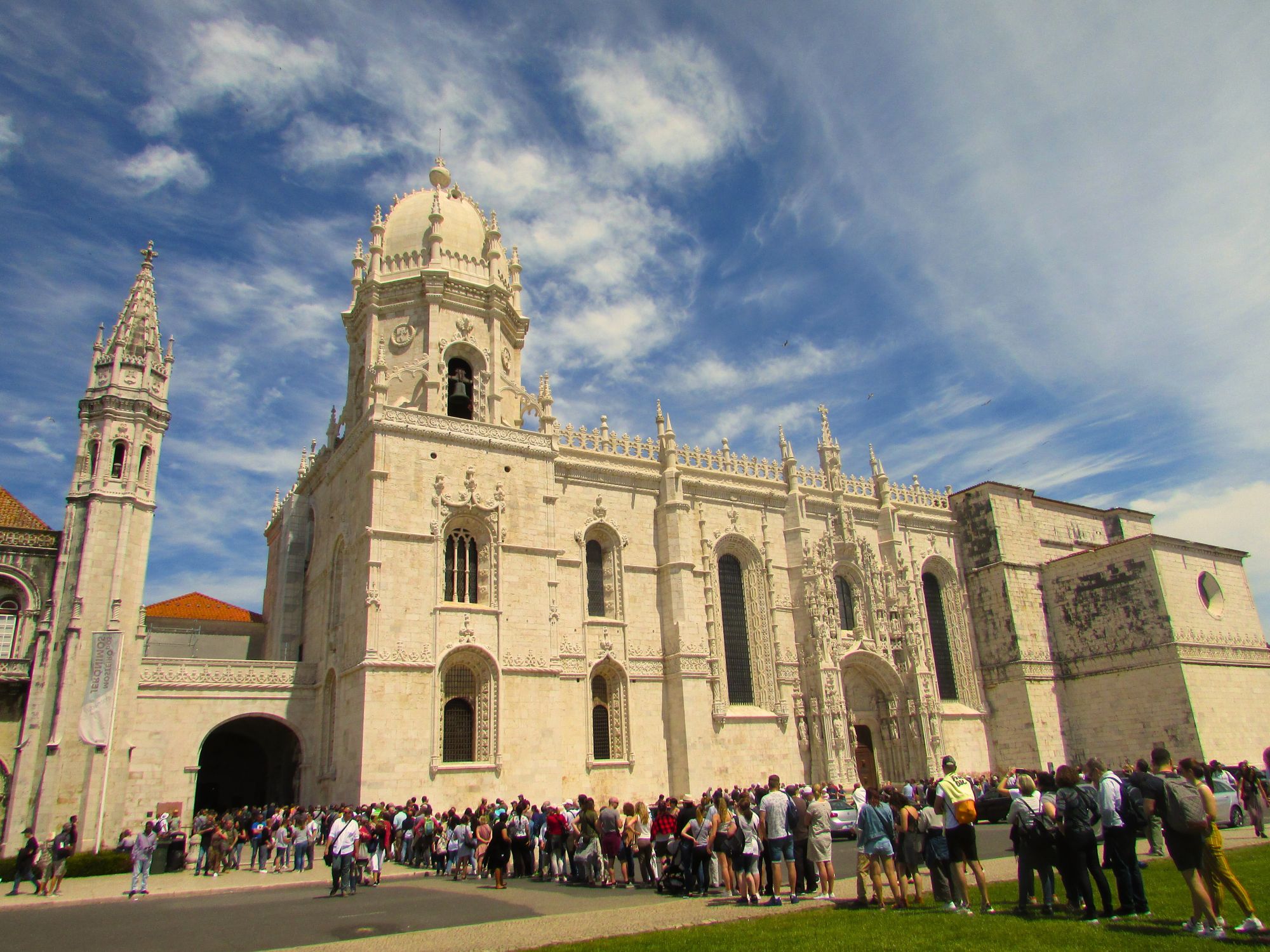
Sintra
Sintra is a must-visit place with many attractions. That includes Pena Palace, a UNESCO World Heritage Site and one of the Seven Wonders of Portugal. The Palace is situated on a hill in the Sintra Mountains, and you can see the ocean and other castles from a clear view. To get to Pena Palace, we took the 434 bus that stops in front of the train station. You can also visit other sites such as Castelo do Mouros, Quinta da Regaleira, Sintra National Palace, Monserrate Palace, Queluz Palace, and Capuchos Convent, but not in one day.
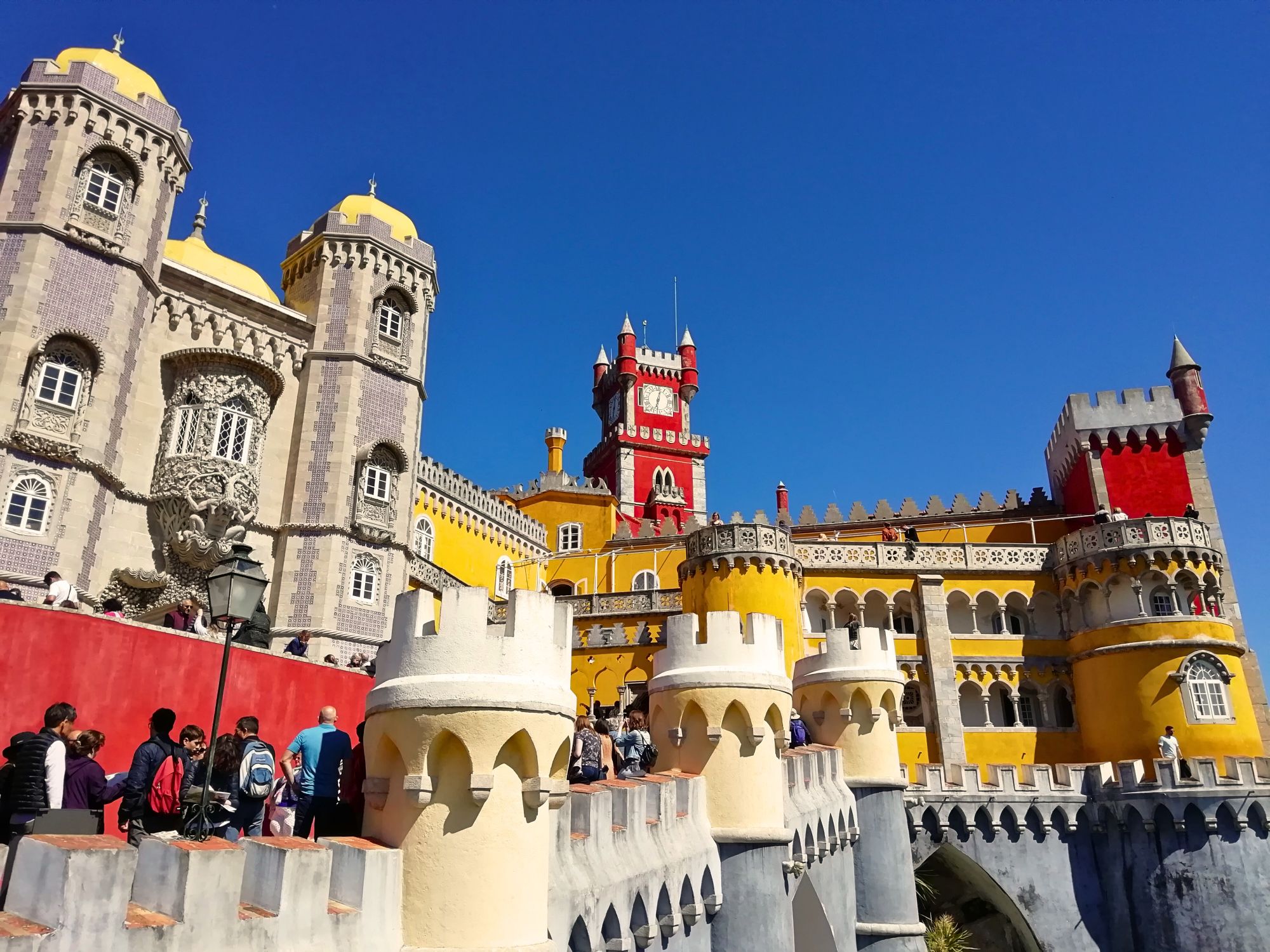
Cabo da Roca
Cabo da Roca is the westernmost point of mainland Portugal and continental Europe. Until the 14th century, it was believed to be the edge of the world. It offers stunning views of the Atlantic Ocean from monumental cliffs. We took the bus No. 403 which runs between Sintra and Cascais every half hour and makes a special stop at Cabo da Roca. Until the next bus, we made a leisurely walk along the coast and enjoyed the breathtaking views.
Cascais
An hour later we went by bus 403 to Cascais, a charming coastal town with beautiful beaches, stylish villas, and traditional architecture. We explored the cobbled streets filled with restaurants and shops, and recommend a walk along the coast to Bocca do Inferno.
On the way back to Lisbon by train, we visited the famous Mercado da Ribeira, which includes the Time Out Market – a food hall with delicious food options.
Tour of 5 Cities
We had a private minivan tour covering 5 cities Fatima, Batalha, Alcobaça, Nazare and Obidos. The price was reasonable and he picked us up from our address. Our knowledgeable and pleasant guide made it a great day.
Fatima is Europe’s most famous Marian shrine, a vast complex with an old basilica and graves of three shepherd children.
Batalha has a beautiful example of Gothic architecture in Santa Maria da Vitoria church and monastery. It is a part of the UNESCO World Heritage Site.
The Monastery of Alcobaça is also a masterpiece of Gothic Cistercian art, with unique Gothic funerary sculptures. A must-see in the monastery is the enormous kitchen complex, featuring a huge central chimney and a specially built canal diverting water and fresh fish from the river Alcoa to the kitchen basin.Nazare is home to the largest waves on the planet. The Chapel on top of the gorge is connected with the Legend of Nazare. In the 12th century, a chapel was constructed above a grotto to commemorate the miracle in which the Virgin Mary saved a Portuguese knight from a fatal fall.
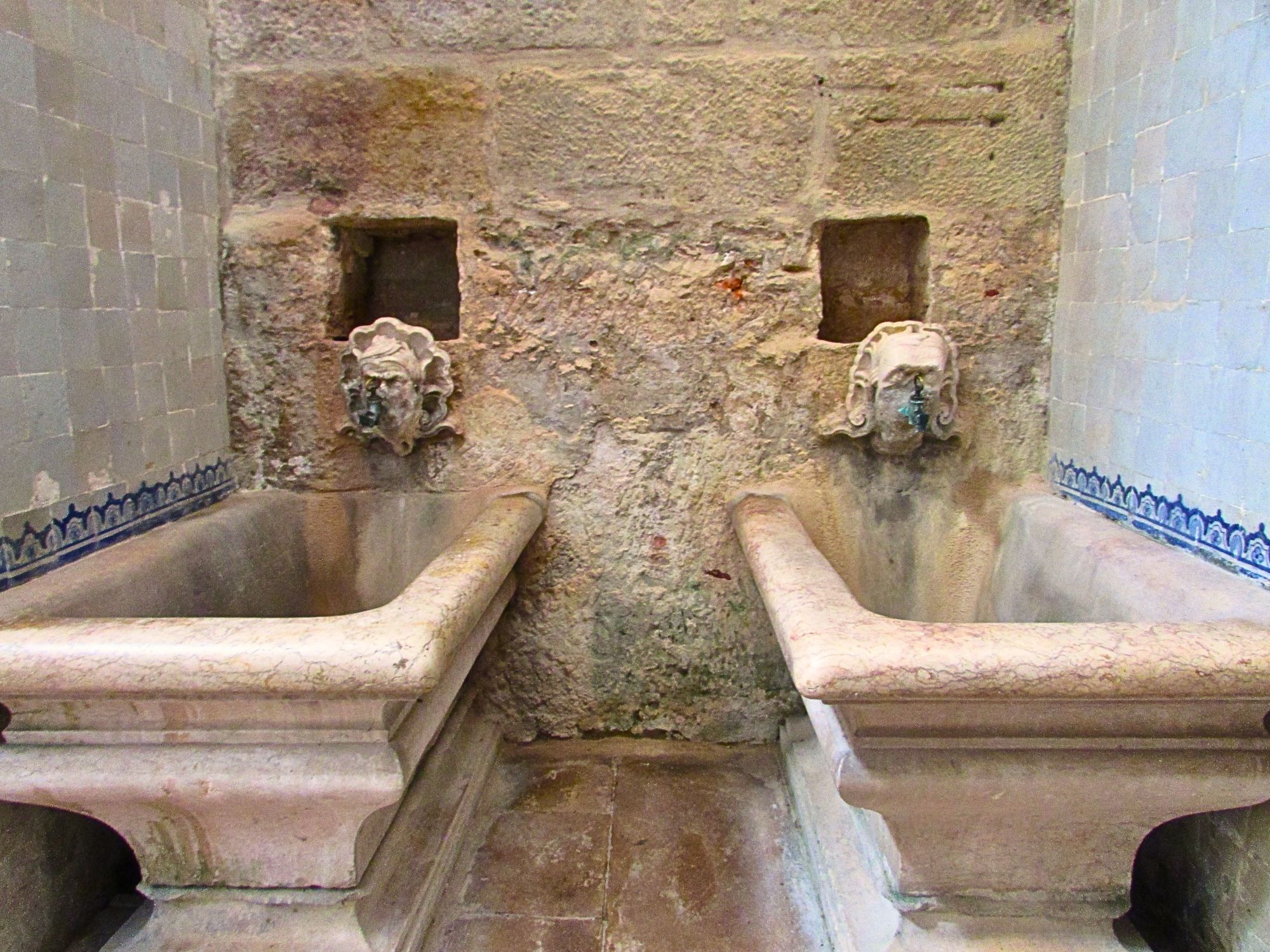
Obidos is a small picturesque town known for its monumental fortress, beautiful churches, shops, and restaurants. A tour of the town included a tasting of the famous local speciality “Ginga” – a liqueur that is drunk from chocolate cups, which you eat after drinking.
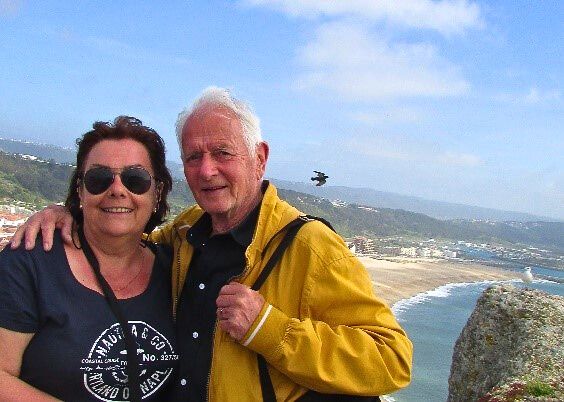
Coimbra
We went from Lisbon to Coimbra by train. Coimbra is known as “the city of students” and has one of the first universities in Europe. It’s situated on a hill and is on the UNESCO list of World Heritage sites. We explored the old University including the Library and the Chapel, Santa Cruz Monastery, and Romanesque Cathedral. In the afternoon, we headed to Porto by train.
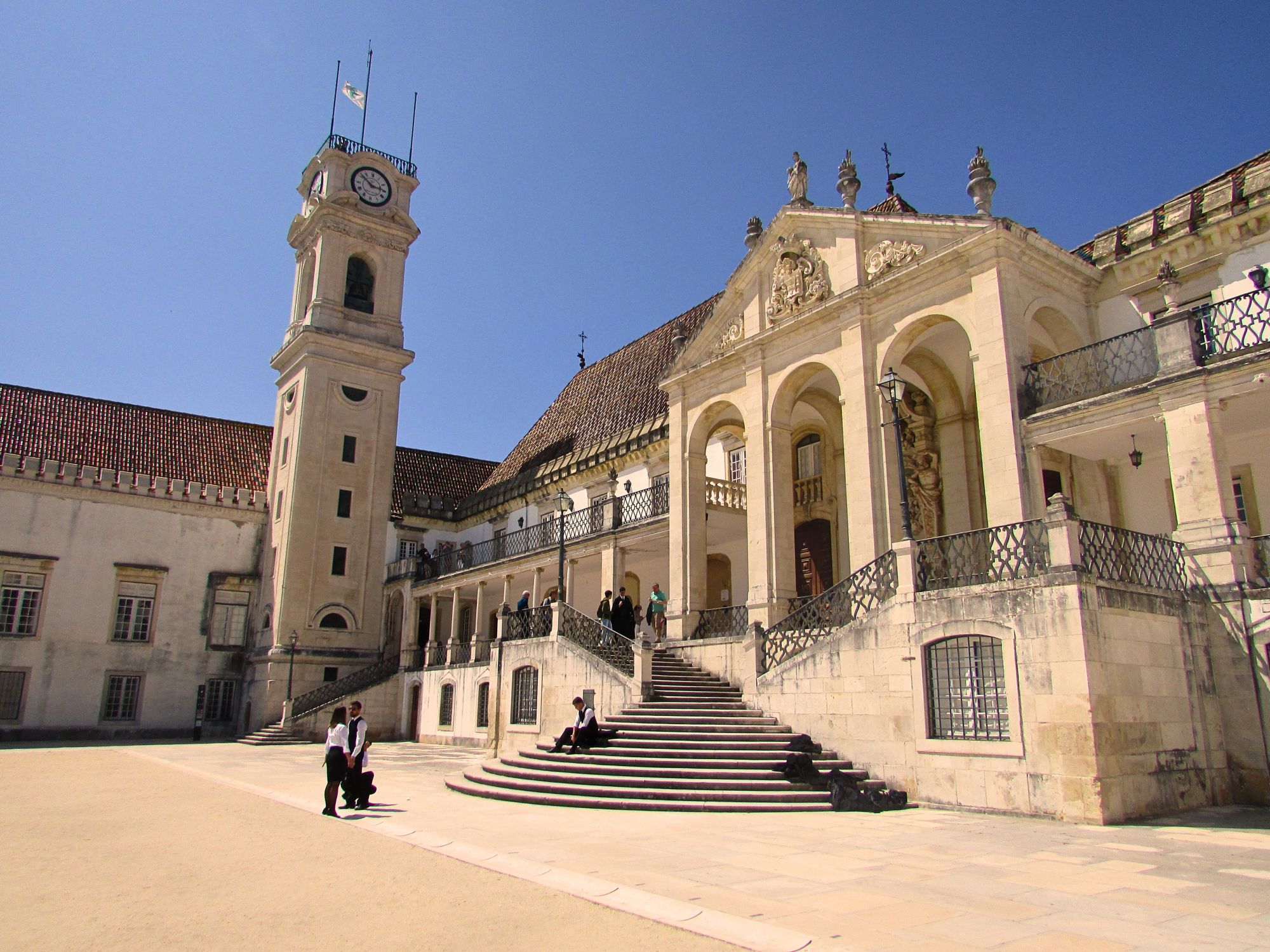
Porto
We spent our first day in Porto exploring Liberdade Square with City Hall, a twin church Igreja do Carmo, a historic book store Lello, a baroque bell tower Torre dos Clérigos, and the Church of Saint Francis. In the afternoon we walked through the district of Ribeira on the riverfront of the river Douro. It is one of the most authentic and picturesque parts of the city with its colourful decorated façades, and many cafes, restaurants, and bars. We had calamari and tripe (Portugal’s speciality) for lunch by the river. In the evening, we attended a fado concert in Casa da Musica.
On the second day, we visited the Chapel of Souls known for its façade completely covered in blue and white tiles (azulejos). We entered São Bento Train Station to see the main hall with over 20,000 tiles that reflect the history of Portugal. And walked to the Sé do Porto or Cathedral of the Assumption of Our Lady. We crossed over the Dom Luis Bridge to the other side of the river Douro, known as Vila Nova de Gaia, where we tasted Port wine.For our third excursion, we visited the cities of Braga and Guimaraes. These cities are located close to each other and from Porto can be easily accessed by train. The train station, São Bento, serves as the departure and arrival point for trains to and from these cities.

Braga
Braga, known as the “Portuguese Rome,” is a religious centre with a history spanning over 2,000 years. Our main destination was the Bom Jesus do Monte Sanctuary, a religious site with a monumental baroque staircase signifying the ascent to heaven. You can reach the site easily by public bus. There is an option to take the world’s oldest water-powered funicular or to climb the 580 steps of the pilgrims’ route. If you’re feeling strong, take the pilgrims’ route by climbing up. Enjoy the views over the city and explore decorations and sculptures on every part of the stairway. Later, we strolled through the old city and tried the famous Portuguese francesinha sandwich.
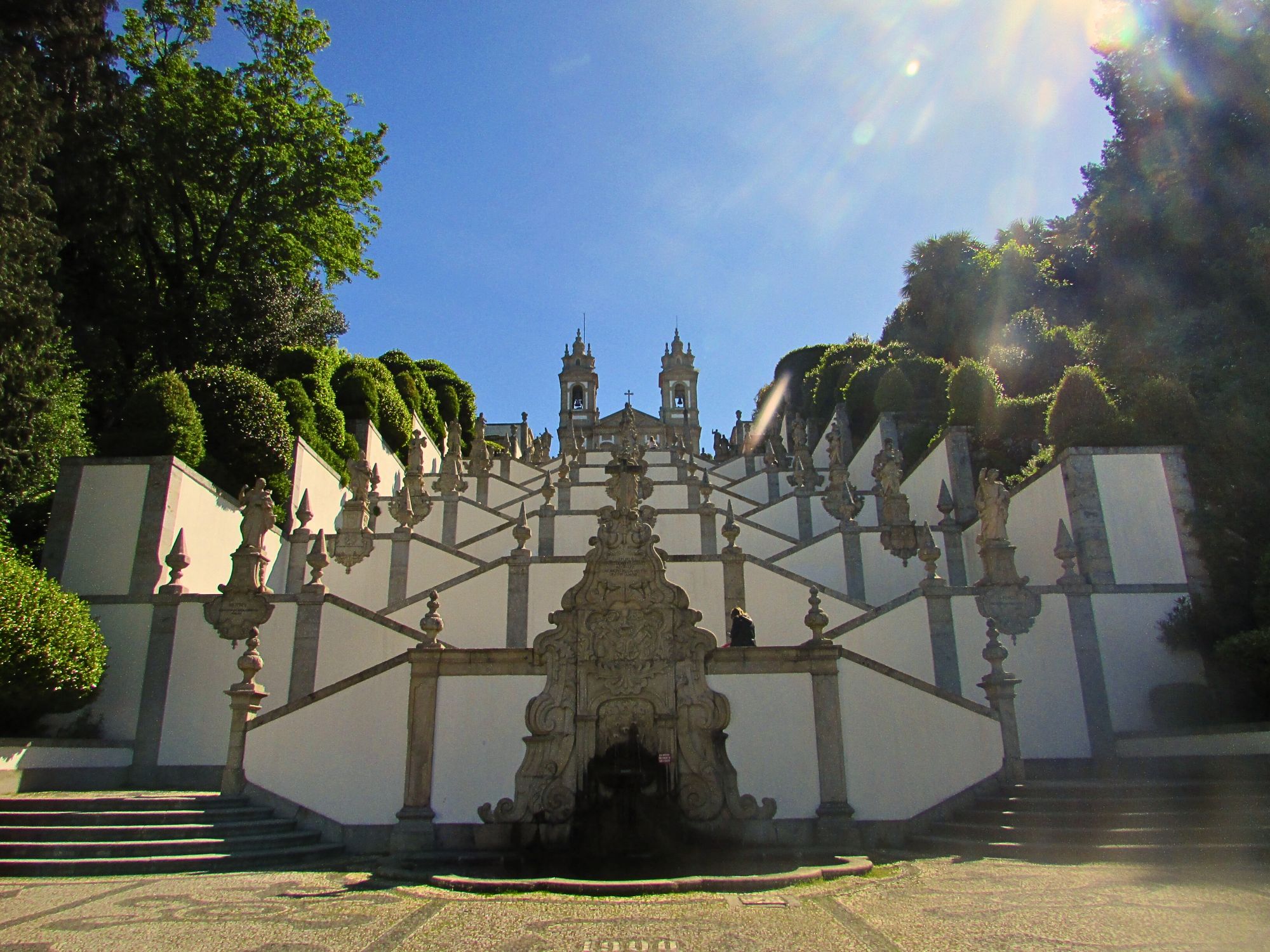
Guimaraes
After lunch, we went by bus to nearby Guimaraes. An ancient stone city is regarded as the birthplace of Portugal. We toured the well-preserved medieval buildings and granite walls, a UNESCO World Heritage Site. We sat on the Largo da Oliveira, a small charming plaza surrounded by traditionally painted houses and open-air cafes with sangria. We returned to Porto by train from the station near the old centre.
Lisbon
On our way back from Porto to Lisbon, we arrived at Oriente Station. It is Lisbon’s main train station and was designed by the famous architect Santiago Calatrava. Located across the station is the Vasco da Gama shopping centre and modern Lisbon built along the Tejo riverside. This area is known as Parque das Nações (Park of Nations) which was built by innovative architects for Expo 98. The two main attractions are the Vasco da Gama Tower, Lisbon’s tallest building, and the Oceanarium, one of the world’s largest aquariums. They are connected by the horizontal panoramic cable car. From the banks of the Tejo River, we enjoyed the view of Vasco da Gamma, the longest bridge in Europe.
Guest Post Author:
Seniorglobetrotters are Vlasta and Hrvoje, living in Croatia, Europe. We are a married elderly couple with two grown-up children. Both of us were professional architects but are now retired. We love to travel and explore the countries, culture, architecture, history, and nature. And take photos along the way.
Page: https://seniorglobetrotters.com/
Instagram: https://www.instagram.com/seniorglobetrotters/
Facebook: https://www.facebook.com/globetrotterseniors
Twitter: https://twitter.com/SeniorGlobetro1
READ NEXT
🌍 Travel Over 60 – Why Your 60s and Beyond Are the Perfect Time to Travel
If you’ve ever dreamed of seeing the world but felt tied down by work, family, or the daily grind, your […]
Stationary Travel: How to See the World Without Leaving Home
You don’t always need a suitcase to explore the world. In fact, sometimes the most meaningful journeys can happen right where you are — in your own home, your neighbourhood café, or even over a video call with someone thousands of miles away.
Why Everyone Over 50 Should Walk the Camino de Santiago
Have you ever felt the pull to do something a little different? Something meaningful? Maybe even something a bit challenging, […]
The Health Benefits of Travel After 50: Why It’s Good for Your Body, Brain & Soul
Everyone loves the idea of a holiday, though sometimes we don’t give it quite the priority it deserves. Far from […]
Exploring the Fabulous Philippines: Guest Blog by Freebird Stephanie Richards
Five years ago, my Filipino son-in-law asked me to meet his UK based parents. It went really well – then, […]
Lisbon, Portugal: A Local’s Top Recommendations for the Perfect Trip.
Lisbon, the enchanting capital of Portugal, is a place where tradition, culture, and modernity weave together in the most captivating […]
JOIN FREEBIRD CLUB
Join our social travel community for adults over 50 where members can connect, engage, share travel tips, arrange meet-ups, book or host homestays, and more. Sign up here to be part of this exciting over 50s travel movement.



 French
French German
German Italian
Italian Portuguese
Portuguese Spanish
Spanish